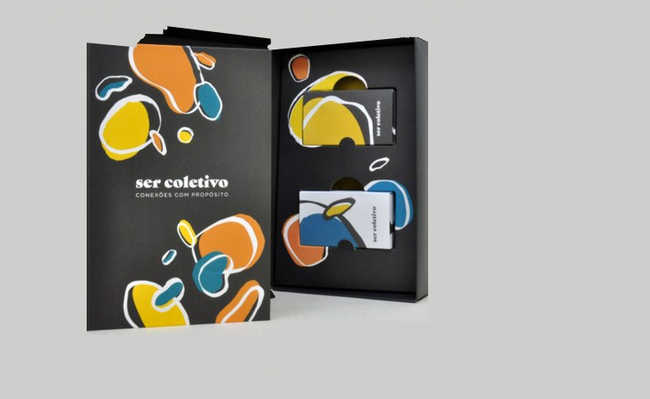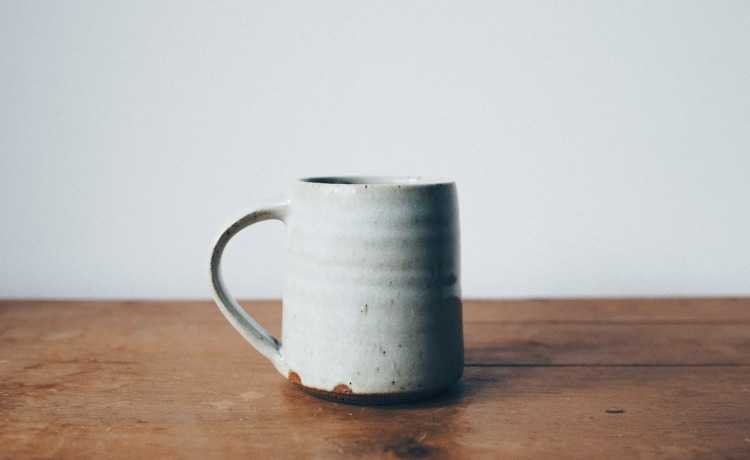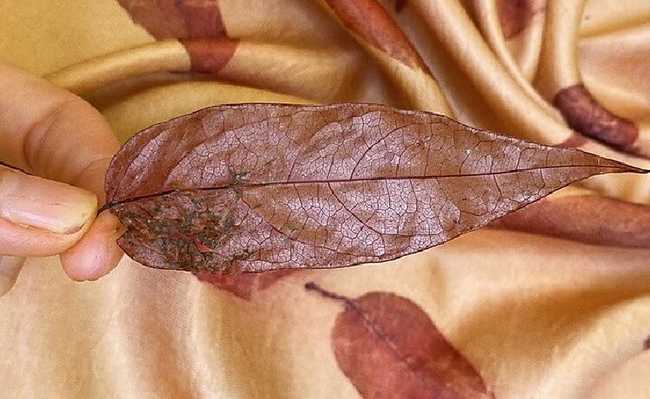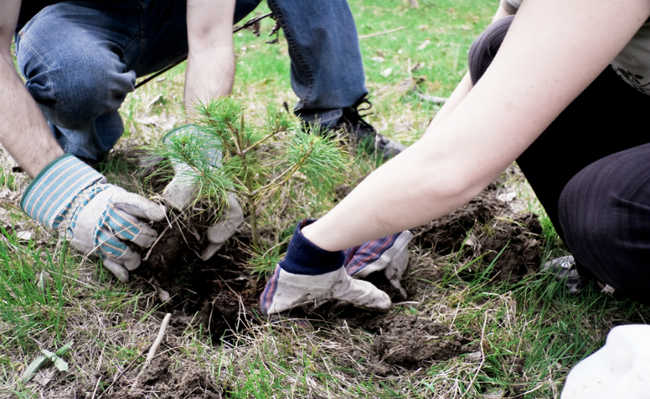How to cleanse the skin with clay
Clay skin cleansing provides a number of health benefits. Understand and find out which type is best for you
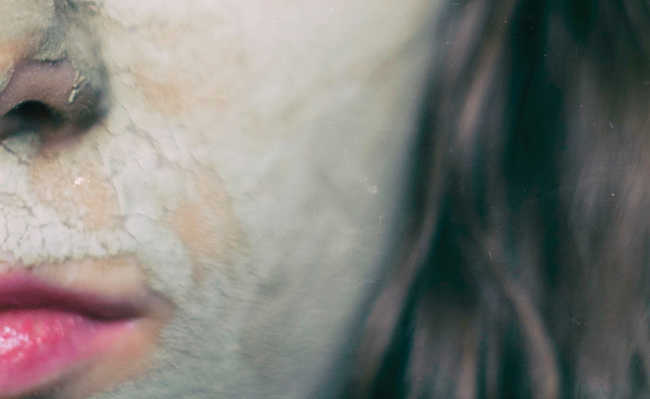
Edited and resized image by Monika Izdebska is available on Unsplash
Clay skin cleansing can be done on all skin types and provides benefits that can be noticed right the first time you use it. If the skin is more oily and acne-prone, it is recommended to use green clay, if it is more sensitive, it is recommended to use white clay. But clay skin cleansing can also be done with beige and pink clays. Understand how clay works on the skin and find out which type is best to use in your skin cleansing:
Cleansing the skin with green clay
Green clay is found in powder form, so to cleanse the skin with clay mix it with plain water, hydrolates or saline solution. Clay alone already contains the necessary amount of nutrients, so it is not necessary to mix it with creams. Always use glass or ceramic containers to make the paste, as metal ones can interfere with the minerals contained in the clay.
Gradually add filtered water to a tablespoon of green clay until it forms a paste.
Apply the clay mixture all over the face except for the mouth and around the eyes and leave it until it dries (about 20 minutes). Remove clay with warm water and dry.
It is normal for the skin to turn red after finishing the clay skin cleanser - if you prefer, finish with a moisturizer to relieve the burning and redness. The mask can be done every two weeks. Clay-based products, such as soaps, can be used daily. Prefer to use it at night, to avoid aggressions caused by the sun's rays.
For cleaning the skin with clay on the body, apply the clay paste on the affected or bruised area and let it act for about an hour, remove it as soon as it dries. The procedure can be done more than once a day.
When cleaning the scalp, the clay will remove the oil and the strands may dry out. So apply only on damp scalp and let it act for about 20 minutes. The application of green clay along the entire length of the strands should only be done in cases of very oily hair, where the oiliness is not limited to the scalp. Do not rub the clay paste on the strands, as friction may damage them. The paste slides naturally over the threads without adding force. For best results you can finish the treatment with vegetable oils, see which one is most suitable for the desired purpose and apply after removing the clay.
As clays are considered anti-residues, they provide a deep cleansing of the scalp skin. For hair that contains chemicals, such as in the relaxation and straightening processes, the clay should be applied two months after the chemical procedure, as it can remove certain substances that are contained in this process. For those who wish to remove these substances due to allergies or irritation, green clay is indicated. Just apply it throughout the region where the procedure was performed.
You can clean the scalp with green clay once a week or every 15 days. It is noteworthy that, for such benefits, clay must be natural and pure, free from chemical substances harmful to health.
Green clay has the greatest diversity of elements, such as iron oxide associated with magnesium, calcium, potassium, manganese, phosphorus, zinc, aluminum, silicon, copper, selenium, cobalt and molybdenum.
Green clay has a neutral pH, great absorbent function, combats edema, is drying, emollient, antiseptic, bactericidal, analgesic and healing. It oxygenates cells, is a gentle exfoliant, promotes detoxification and regulates sebum production.
It also has an astringent, toning and remineralizing action. The presence of iron plays an important role in cell respiration and electron transfer, leaving the skin hydrated, revitalized and firm.
It is the most effective clay for cleaning oily and acne-prone skin, as it has drying, anti-inflammatory and great absorption capacity, absorbing excess oil and regulating sebum production.
The green clay is what detoxifies and acts as a light exfoliant, eliminating toxins and favoring cell renewal, in addition to smoothing the appearance of spots caused by pimples. So if you suffer from acne problems, green clay is the perfect color!
The silicon present in this type of clay plays a fundamental role in the reconstitution of skin tissue and in the defense of connective tissue, it is healing and regenerating, helping to reduce inflammation - it is good for treating wounds, edema and bruises.
Green clay applied to the body can bring relief from joint and muscle pain due to its analgesic and anti-inflammatory properties. It helps improve blood circulation and relieves abdominal problems.
In aesthetic treatments in clinics and spas, green clay is used to reduce measures, burn localized fat and reduce cellulite. When applied to streaked regions, green clay softens the appearance of the marks.
For hair, the hair mask with green clay is indicated for normal or oily hair, as it will absorb the oil from the scalp. As it is detoxifying and astringent, it is also good in anti-dandruff and anti-seborrheic treatments.
Skin cleaning with white clay
White clay originates from silico-aluminic sedimentary rocks and is rich in several mineral compounds, but mainly in aluminum, silica and kaolinite, which are responsible for its properties. Amazon clays are types of clay that stand out for being rich in phytoactives full of cosmetic properties, one of which is white clay from the Amazon. Formed on the banks of rivers after flooding during the rainy season, it is a clay rich in iron, aluminum, boron, potassium, calcium and sulfur.
Cleansing the skin with white clay should be done in the same way as cleaning the skin with green clay. Apply the paste formed by the powdered clay and the saline solution (or filtered water or hydrolates) all over the face, except in the eyes and mouth region and let it act for 20 minutes before removing it with water. Clay skin cleansing can be done every two weeks. Clay-based products, such as soaps, can be used daily.
Scalp Cleansing with White Clay should be applied to damp hair, massaging the scalp slowly and letting it act for about 20 minutes. Do not rub the white clay paste onto the strands as friction may damage them. The paste slides naturally over the threads without adding force. For best results you can finish the treatment with vegetable oils, see which one is most suitable for the desired purpose and apply after removing the clay.
Like green clay, white clay acts as an anti-residue, and provides a deep cleansing of the scalp skin, removing residue from relaxation and smoothing, the application of white clay must be done two months after the chemical procedure, as it may remove certain substances that are contained in this process.
They can also be used as a "pre-shampoo" to relieve itchy scalp. Clay hair treatment can dry out the strands when done in excess - applying every 15 days is enough to nourish the hair. It is noteworthy that, for such benefits, clay must be natural and pure, free from substances harmful to health.
White clay, also called kaolin, contains a significant percentage of alumina, kaolinite and silica, in addition to a pH very close to that of the skin, for this reason it is the softest clay of all. Promotes actions to adsorb oils without dehydrating the skin, softens, heals and catalyzes the body's metabolic reactions. On the face, it can be used to treat blemishes, as it has a lightening effect - this on sensitive and delicate, dehydrated, aged and acne-prone skin. Its use is more suitable for the face, as it does not give good results in body treatments.
Manganese and magnesium are also present in its composition, and this fact makes white clay a great anti-inflammatory, which can be applied to acneic skin. It can be used for normal, mixed and oily skins.
The presence of silicon has a purifying, astringent and remineralizing action, with an antiseptic and healing effect that reduces inflammation and plays a fundamental role in the reconstitution of skin tissues, in addition to acting against flaccidity.
Wash your face beforehand with soap and apply the pink clay mask all over the face, except for the eyes and mouths and let it work for about 20 minutes before removing it with water. You will notice the smoothness and shine on your face. It is normal to feel a burning sensation after applying the mask, but don't worry, medicinal clay is not contraindicated. Apply a moisturizer after removal to relieve the burning sensation. As it is a soft clay, it can be used every day without drying out the skin.
To cleanse the scalp with clay, apply the clay to damp hair, massaging slowly. Let it act for about 20 minutes. Do not rub the clay paste on the strands, as friction may damage them. The paste slides naturally over the threads without adding force. For best results you can finish the treatment with vegetable oils - see which one is most suitable for the desired purpose and apply after removing the clay.
Skin cleaning with pink clay
Pink clay can also be used as a pre-shampoo to relieve itchy scalp and to treat oiliness. Apply every 15 days is enough to nourish the hair. It is noteworthy that for such benefits, the pink clay must be natural and pure, free from substances harmful to health.
Pink clay is a mixture of red and white clay, resulting in a smooth clay, suitable for more sensitive and delicate skin, reddened, with allergic or irritated tendencies, dehydrated, acneic and with spider veins and rosettes.
It is rich in iron oxide, which plays an important role in cell respiration and electron transfer, keeping the skin hydrated and supple. Clay skin cleansing removes toxins, absorbs excess oils, while providing the minerals needed to restore skin and hair's natural freshness and shine.
Cleaning the skin with pink clay fights free radicals, preventing aging and wrinkles, being effective on mature skin. It has healing and smoothing properties from white clay, which soothe irritated skin, smooth rosacea and heal acne.
Red clay has anti-stress and measure-reducing properties, and white clay is anti-inflammatory, astringent and revitalizing. The combination of all these properties is what makes pink clay so used in aesthetic treatments.
Pink clay can be used in body treatments, as in addition to relaxing, deflating and invigorating the skin, it also helps in burning and draining cellulite and localized fat. It also has a tensor effect, being very effective in tissue flaccidity treatments.
In hair, pink clay acts on blood circulation, stimulating and facilitating hair growth. It is antiseptic and detoxifying, eliminating bacteria from the scalp and can also be used in treatments to prevent oiliness.
On the face, apply the paste made with saline solution, filtered water or hydrolates with beige clay all over the face, except for the eyes and mouths and let it act for 20 minutes before removing it with water. Finish with a moisturizer. The mask can be done every two weeks. However, beige clay-based products such as soaps can be used daily. Prefer to use it at night, to avoid aggressions caused by the sun's rays.
To clean the scalp with clay, apply to damp hair, massaging and letting it act for about 20 minutes. As with other types of clay, do not rub the beige clay paste on the wires, as friction may damage them. The paste slides naturally over the threads without adding force. For best results, you can finish the treatment with vegetable oils - see what else.
Skin cleaning with beige clay
Beige clay is a mixture of brown and white clay. In this way, it more smoothly incorporates the properties of the two clays. This type of clay is indicated to treat oily skin, inflammation, scars and skin rejuvenation.
Beige clay has many properties and, consequently, many applications. White clay is rich in aluminum and silicon; brown clay, in addition to those mentioned, has a significant amount of iron when compared to other clays, in addition to titanium, an important component in sunscreens and with filtering action, preventing the entry of bacteria.
The presence of silicon has a purifying, astringent and remineralizing action, with an antiseptic and healing effect. This reduces inflammation and plays a fundamental role in the reconstitution of skin tissue, in addition to acting against flaccidity. Aluminum works against lack of tone and inhibits the development of bacteria that cause pimples, boils and inflammation. Iron is very important in cell respiration and electron transfer, the absence of which makes the skin dry, thin and lacking in elasticity.
Beige clay is indicated for oily, acne-prone and mixed skins, as it helps to regulate sebum production and absorbs oil without dehydrating the skin. It is often excess oil that causes acne - for this reason, the use of beige clay is effective in anti-acne treatment, as in addition to reducing oiliness, it also has an astringent, healing and anti-inflammatory effect. It also softens skin blemishes caused by pimples.
The present iron, even in small amounts, activates the cutaneous circulation and revitalizes the skin, which, together with other mineral salts, hydrates, restoring the skin's freshness and shine. Eliminates toxins, impurities and free radicals caused by everyday stress, rejuvenating tissue.
Beige clay can be applied to the body, in inflamed or injured places, helping with de-inflammation and healing. Due to its tensor power, it is a clay that acts on the skin's elasticity, acting against skin flaccidity, such as tissue flaccidity. It also helps in reducing measures, acting on localized fat and cellulite.
The beige clay, in the hair, helps to regulate the keratinization of the threads and is very efficient in oily hair, balancing the sebaceous production. Helps in faster hair growth, hydrates and deeply cleans the scalp.
Check out the types of clays, vegetable oils and other 100% pure and natural products available in the eCycle Store.

